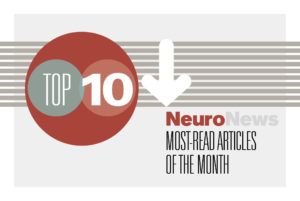 Our top stories from March 2021, including: International Stroke Conference (ISC; 17–19 March, virtual) coverage, mechanical thrombectomy for posterior circulation distal, medium vessel occlusion (DMVO) found to be safe, why the neurosurgery field is male-dominated, and the US launch of Abbott’s remote platform, the NeuroSphere Virtual Clinical.
Our top stories from March 2021, including: International Stroke Conference (ISC; 17–19 March, virtual) coverage, mechanical thrombectomy for posterior circulation distal, medium vessel occlusion (DMVO) found to be safe, why the neurosurgery field is male-dominated, and the US launch of Abbott’s remote platform, the NeuroSphere Virtual Clinical.
1. Study finds mechanical thrombectomy for posterior circulation DMVO safe, and technically feasible
A study recently published in The Journal of the American Medical Association (JAMA) has found that mechanical thrombectomy for posterior circulation DMVO is a reasonable, safe, and technically feasible therapy option.
2. BrainStorm’s NurOwn does not have enough clinical data according to FDA
BrainStorm Cell Therapeutics announced it recently met with senior leadership from the US Food and Drug Administration (FDA) and received feedback on a high-level data summary from the NurOwn (autologous MSC-NTF cells) amyotrophic lateral sclerosis (ALS) phase III clinical trial.
3. Study finds Neuroprotectant delivered to the brain in nanoparticles may improve stroke treatment
Preliminary research to be presented at the ISC has found that when NA1, a neuroprotectant, was delivered to the brain in nanoparticles, it reduced stroke severity and improved survival in a mouse model of stroke.
4. Women in neurosurgery: Why is the field still male-dominated?
Factors including representation, a lack of mentoring, and discrimination have been among the issues cited by female neurosurgeons as contributing to gender disparity in the field. This is according to a study published in the Journal of Neurosurgery by Tina Lulla (Rutgers New Jersey Medical School, Newark, USA) et al, who conducted a systematic literature review of studies pertaining to women in neurosurgery.
5. Immediate angiography may reduce stroke treatment time
A late-breaking abstract presented at the ISC reports that immediate angiography, rather than the standard computed tomography (CT scan), reduced stroke treatment time and was linked to improved recovery.
6. No significant difference between IVT plus EVT compared with EVT alone
A late-breaking abstract presented at the ISC reports results from the MR CLEAN-NO IV trial, which is assessing the efficacy and safety of direct endovascular thrombectomy (EVT) compared with intravenous thrombolysis (IVT) followed by EVT in patients with acute ischaemic stroke caused by an occlusion of the anterior circulation. Researchers found no statistically significant difference in outcomes between these groups.
7. BrainQ trial results show a potential reduction in disability after stroke
BrainQ, an Israeli start-up with an artificial intelligence- (AI) powered therapeutic platform, has announced the results from a randomised controlled trial (RCT), showing 77% of treatment group recovered to a level of no symptoms or no significant disability on the modified Rankin Scale (mRS).
8. Abbott announces NeuroSphere Virtual Clinic
Abbott has announced the US launch of its NeuroSphere Virtual Clinical, a first-of-its-kind technology that allows patients to communicate with physicians, ensure proper settings and functionality, and receive new treatment settings remotely as needed.
9. ReFlow system mini receives FDA breakthrough device designation
Anuncia has announced that it has received US Food and Drug Administration (FDA) breakthrough device designation for its ReFlow system mini, intended for the treatment of cerebral spinal fluid (CSF) disorders requiring shunting.
10. Viz.ai announces new data on AI stroke platform
Viz.ai presented new data supporting the use of its technology to coordinate care for acute ischaemic stroke, haemorrhagic stroke, and clinical trial recruitment at the ISC, according to a company press release.











